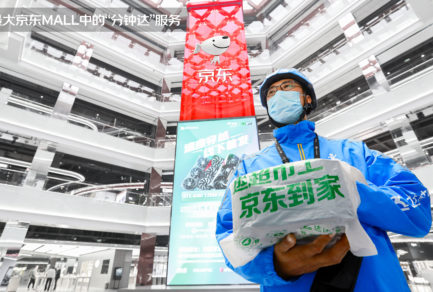Feb 27, 2021|
In-Depth Report: Rare Diseases in China and the Mission of JD Health
by Vivian Yang
On Feb. 27, the day before World Rare Disease Day (last day of February each year since 2008), the Illness Challenge Foundation released An Observation Report on Rare Disease in China (referred to below as “the report”), providing an overview of the changes in rare diseases in China over the past decade. It analyzes and interprets changes in the community, policy, and industry from the patients’ perspective, and suggests the direction of future development of rare diseases in China.
The report is developed with the support of JD Health, the healthcare subsidiary of JD.com. The company provides the most comprehensive pharmaceutical products and the leading telemedicine services in China, including orphan drugs for patients with rare diseases. On the day the report was released, JD announced to join hands with the Illness Challenge Foundation to create a dedicated fund for rare disease patients in China.
“The world has kissed my soul with its pain, asking for its return in songs.” Wang Yi’ou, founder of the Illness Challenge Foundation, loves to quote this poem by Rabindranath Tagore, and jokingly refers it as the best “chicken soup” for patients with rare diseases.
In fact, Wang has had a band with her fellow patients with rare diseases since 2015. The band is called “8772” which is the transformation of BTTZ, the initial letters of the Chinese pronunciation of “illness challenges” (Bing Tong Tiao Zhan). The band writes their own songs and performs in public from time to time.
“The audience might expect us to sing songs that are kind of soft and caring, but actually we give them rock music on the stage. We don’t want to sell misery to people. We do this on purpose to fight against inherent prejudices.”

Wang Yi’ou (second from right) performs with her band
Wang, 39, with a height of 140 cm (4.5 feet), suffers from osteogenesis imperfect, a condition that causes extremely fragile bones, also known as “China doll” syndrome. She founded China-Doll Care and Support Association in 2007. After a decade committing to this social work, she created the Beijing-based Illness Challenge Foundation in 2016 to further advocate and provide support for people with all kinds of rare diseases.
Rare diseases have emerged on China’s public agenda in recent years. Though there’s still a lot to be done in this field compared with the U.S. and Europe, the fact that organizations like Wang’s are growing in size and influence reflects the country’s progress on addressing more and more needs of this vulnerable population.
“Rare is many, rare is strong, rare is proud.”
Rare diseases are by definition very uncommon. In the US, a rare disease is defined as one that affects fewer than 200,000 people. The Europe Union sets the bar at one in 2,000, in Japan and Korea, it is one in 2,500.
When taken together, however, they are not rare at all. Behind these percentages are more than 350 million vivid lives – around 20 million in China alone according to incomplete statistics – who are suffering from over 7,000 varieties of rare diseases, with about 250 new diseases added to the list each year.
What is even rarer than the diseases themselves is their cures. Over 80% of rare diseases are genetic in origin, 50% begin in childhood, and so far only 5% have effective medicine and treatment. The journey of a patient and his/her family to obtain medical support is often difficult, complex, worrying and isolating.
Many ordinary people in China came to know rare diseases thanks to the world famous “Ice Bucket Challenge” in 2014. The splashy charity campaign for ALS was brought to China with the effort of Wang’s China-Doll Center for Rare Disorders . The campaign archived great success in drawing public attention to rare disease issues in the country.
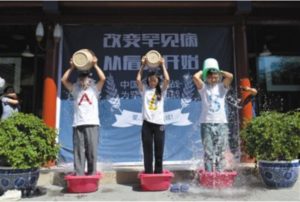
Ice Bucket Challenge in China
Stephan Hawking was arguably the most well-known person to suffer from ALS in the world . In year 2020, another ALS patient in China walked into the lielight. Dr. Zhang Dingyu, president of Jiinyintan Hospital in Wuhan, a major battlefield for the fight against COVID-19, led 800 of his colleagues for months since the outbreak of COVID-19. The disease has begun to deprive Dr. Zhang of his leg strength. Watching him racing the clock with his hobbling steps making every effort to save people suffering from COVID-19, Chinese people witnessed a noble, devoted and beloved man with a terrible and hateful rare disease.
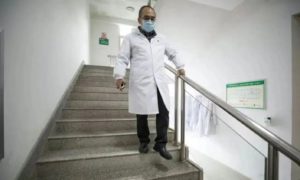
Dr. Zhang Dingyu, president of Jinyintan Hospital in Wuhan
The three key barriers
Increasing awareness of rare diseases is important because early intervention can greatly improve the rate of diagnosis and treatment. According to the latest U.S. National Organization for Rare Diseases 2019 survey, 50% of patients and caregivers attributed diagnostic delays to a lack of awareness. It is estimated that 40% of patients in the world have been misdiagnosed at least once, and it takes them more than five years on average to receive diagnosis.
Despite their great overall number, many rare disease patients are orphans of the health system. Limited medical specialization is part of the plight. Patients often face geographic barriers to get care. There are only a handful of specialists nationwide, or even worldwide, who have expertise in a given rare condition. As a result, patients often travel long distances to access their treating providers.
“There are fewer specialists available than rare disease patients,” pointed out Huifang Shang, deputy director of Department of Neurology, West China Hospital of Sichuan University at the 2020 China Conference on Rare Diseases. “Many rare diseases are not included in the medical school curriculum, and specialists need to accumulate experience in their real work, but if they practice in smaller hospitals, there are very few chances to gain experience in treating rare diseases.”
Treatment barriers are the second pain point. The issue of accessibility to live-saving drugs in China was highlighted in the 2018 blockbuster dramedy “Dying to Survive”. The film is based on a true story of a Chinese businessman who circumvented big pharmaceutical companies and illegally imported cheap generic medicine from India for leukemia patients. The man’s arrest sparked public outcry in the country and appears to have influenced government’s policies regarding approval for specific overseas medications to enter the market.

A film poster of “Dying to Survive”
Given the fact that 95% of rare disease don’t actually have effective treatment to date, coordinated care and rehabilitation products and services are an even more pressing need for people affected by rare diseases.
Financial burden for patients is significant. Take Spinraza as an example. According to the report, the prescription medicine for spinal muscular atrophy (SMA) costs about US$ 750,000 dollars a year for patients in the U.S. and Europe, while with the favorable policies in China, SMA patients need to spend about RMB 1.05 million yuan(US$ 163,000) for a year of treatment. This is almost impossible for ordinary Chinese families, not to mention the cost of them in the process of seeking medical treatment, such as the expenses for transportation, accommodation and the loss of working time.
Maslow’s hierarchy of needs
Greater efforts are being made to address the “Maslow’s hierarchy of needs” for people with rare diseases in China during the past decade, from their need for diagnosis and treatment, to medical and financial support, and social participation.
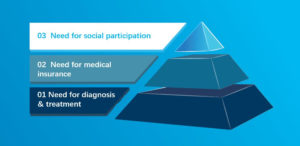
A major milestone was the release of the country’s first list of rare diseases in May 2018, consolidating policy support for the R&D work of orphan drugs and treatment of 121 rare diseases which is estimated to be able to benefit about 3 million patients. By December 2020, China’s National Medical Products Administration has approved 95 medications for rare diseases on the list. The list and the drug approval process will continue to be improved in an accelerated speed.
With the policy in place, the question today has evolved from where treatments are to how to ensure patients can afford them. Addressing this aspect, business and social organizations can contribute more innovative solutions.
The internet helps to break some barriers. Through telemedicine, people with rare diseases have a much more convenient and efficient way to find doctors and drugs online, regardless of where they live. The internet can also promote doctor-to-doctor cross-disciplinary exchanges on their experiences of treating rare diseases. Last but not least, it provides an open platform for patients to communicate with each other, acquire healthcare knowledge and increase their sense of presence and social acceptance.
The Rare Disease Care Center is established with the goal to become an efficient platform with integrated treatment, medication, insurance and charity support for patients. JD Pharmacy is the drug-selling platform under JD Health. It provides the most comprehensive choices of oral medications for rare diseases available in China. The platform ensures to deliver authentic drugs via its proprietary logistics network, in many cases the cold chain network, to patient’s doorsteps in a secure and timely manner.
The platform will also strive to become a trusted and interactive place for doctors and patients to share their stories and experiences, not only addressing their medical needs, but also their emotional and life desires. “The aim of our Rare Disease Care Center is not only to help patients to address the issues patients face in reality, but also to call on the society to give them more love and aid,” said Lijun Xin, CEO of JD Health.
“The issue of rare diseases is too complicated to be solved by any single party. It needs to be the shared responsibility of all of us in society,” said Wang Yi’ou, “The primary thing for our work is to influence people’s mindsets. People need to view us as a normal and also important part of society. Without such change of mindsets, even if all the policies are in place, rare diseases patients will still not be able to live a dignified life.”
Tagore also has following lines, “That which oppresses me, is it my soul trying to come out in the open, or the soul of the world knocking at my heart for its entrance?”
May human being conquer all rare diseases someday, when all the soul could come out in the open.
(Part one of two)
Read part two : In-Depth Report: To Make Solutions of Rare Diseases Not Rare




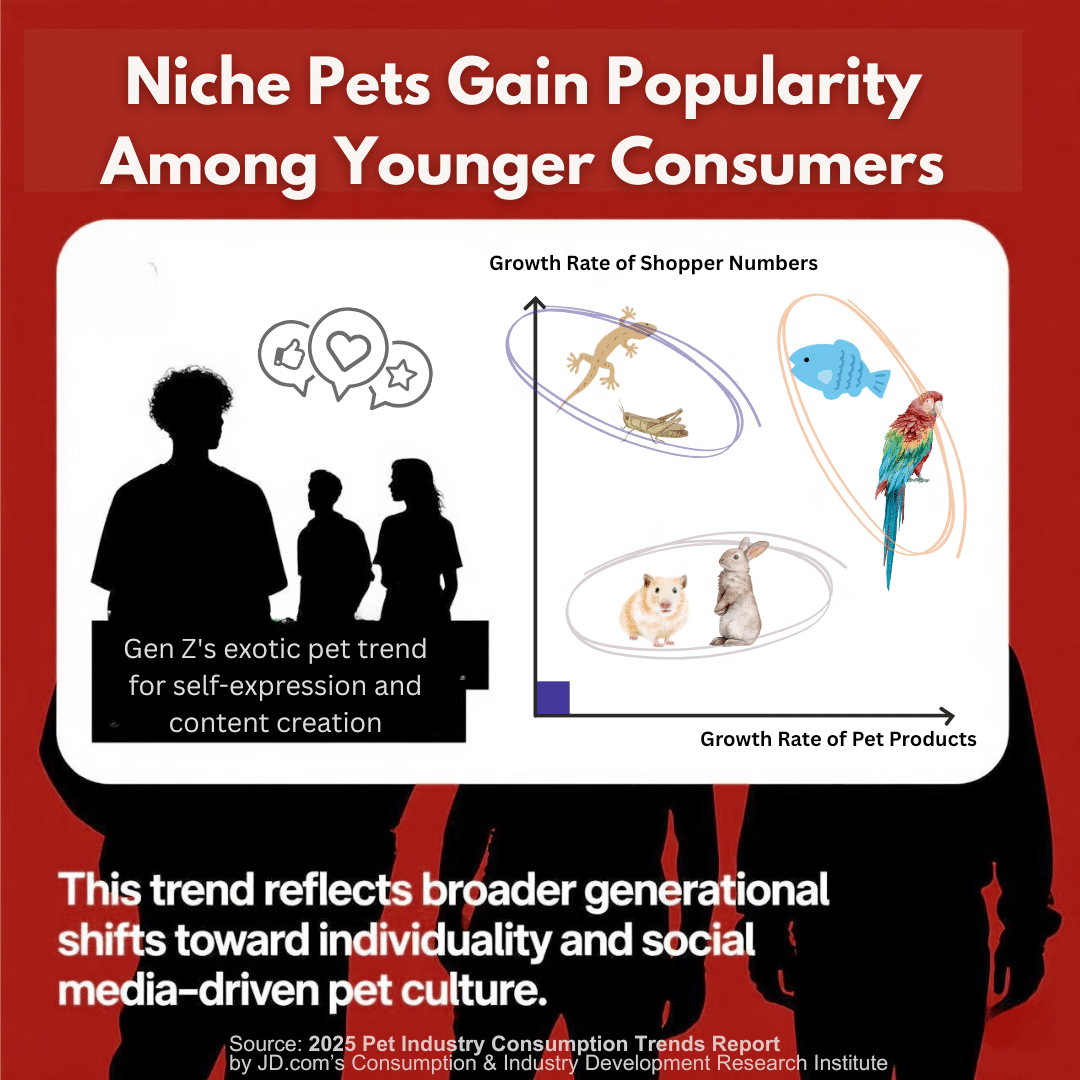
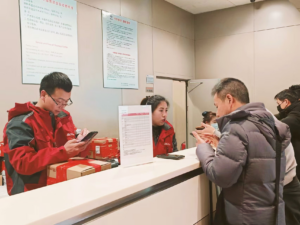 This Harbin tourism boom has also spurred a surge in sales of winter apparel. JD.com’s data indicates a rapid growth in the sales of warm clothing items such as down jackets, snow boots, and thermal underwear between January 1st and 7th. The sales growth is especially pronounced in southern provinces and cities such as Jiangsu, Zhejiang, Guangdong, Sichuan, and Shanghai. Notably, tall snow boots registered a 206% year-on-year increase in transactions, while padded cotton caps and thickened long down jackets soared by 158% and 134%, respectively. Beyond clothing, travel gear has also seen a considerable uptick, with a 98% year-on-year growth in transactions for large suitcases and travel backpacks in these southern regions.
This Harbin tourism boom has also spurred a surge in sales of winter apparel. JD.com’s data indicates a rapid growth in the sales of warm clothing items such as down jackets, snow boots, and thermal underwear between January 1st and 7th. The sales growth is especially pronounced in southern provinces and cities such as Jiangsu, Zhejiang, Guangdong, Sichuan, and Shanghai. Notably, tall snow boots registered a 206% year-on-year increase in transactions, while padded cotton caps and thickened long down jackets soared by 158% and 134%, respectively. Beyond clothing, travel gear has also seen a considerable uptick, with a 98% year-on-year growth in transactions for large suitcases and travel backpacks in these southern regions. JD.com Named IFR Asia’s 2020 Issuer of the Year
JD.com Named IFR Asia’s 2020 Issuer of the Year

